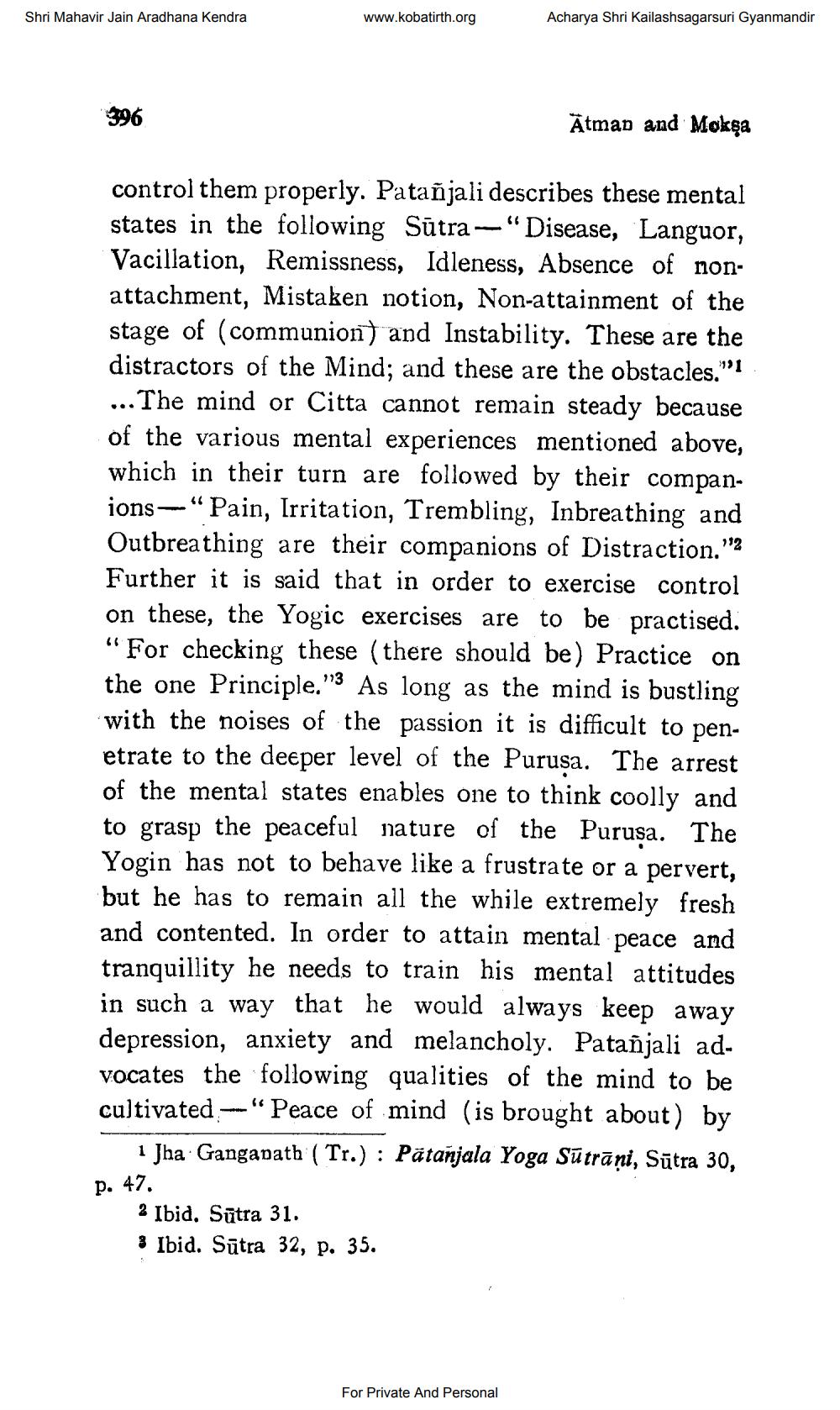________________
Shri Mahavir Jain Aradhana Kendra
www.kobatirth.org
Acharya Shri Kailashsagarsuri Gyanmandir
396
Ātmap and Moksa
control them properly. Patañjali describes these mental states in the following Sūtra -"Disease, Languor, Vacillation, Remissness, Idleness, Absence of nonattachment, Mistaken notion, Non-attainment of the stage of (communion) and Instability. These are the distractors of the Mind; and these are the obstacles."! ... The mind or Citta cannot remain steady because of the various mental experiences mentioned above, which in their turn are followed by their companions—"Pain, Irritation, Trembling, Inbreathing and Outbreathing are their companions of Distraction.'2 Further it is said that in order to exercise control on these, the Yogic exercises are to be practised. “For checking these (there should be) Practice on the one Principle."3 As long as the mind is bustling with the noises of the passion it is difficult to penetrate to the deeper level of the Purusa. The arrest of the mental states enables one to think coolly and to grasp the peaceful nature of the Purusa. The Yogin has not to behave like a frustrate or a pervert, but he has to remain all the while extremely fresh and contented. In order to attain mental peace and tranquillity he needs to train his mental attitudes in such a way that he would always keep away depression, anxiety and melancholy. Patañjali advocates the following qualities of the mind to be cultivated."Peace of mind (is brought about) by
1 Jha Gangapath ( Tr.) : Patanjala Yoga Sūtrāņi, Sūtra 30,
p. 47.
2 Ibid. Sūtra 31. 3 Ibid. Sūtra 32, p. 35.
For Private And Personal




